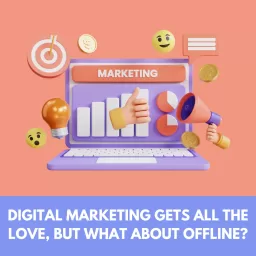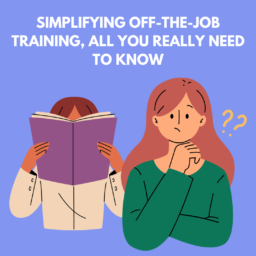For those new to the world of marketing, it’s easy to get caught up in flashy visuals, catchy slogans, and the latest social media trends. But at its core, effective marketing is about one thing: people. Specifically, understanding how people think, feel, and behave when making decisions. This is where behavioural science comes into play — and why it’s crucial to develop a strong grasp of it if you want to become a truly effective marketer.
What is Behavioural Science?
Behavioural science is the study of human behaviour, drawing from fields like psychology, sociology, and neuroscience. In marketing, it helps us understand why consumers make the choices they do — and how we can influence those choices in a way that feels natural, helpful, and persuasive.
It’s not just about knowing that someone clicks a button or buys a product. It’s about why they do it, when they’re likely to do it, and what influences their decisions along the way.
Why It’s Important to Know Your Audience
Let’s be clear: not all audiences are created equal. Your product or service might appeal to different people for different reasons. For example, a gym membership could attract someone looking to improve their health, another person who wants to meet new people, and a third who’s chasing a summer body. Each of these motivations affects how you communicate and position your offer.
This is why audience segmentation is so important. By grouping your market into segments based on shared traits — like demographics (age, location, income), psychographics (values, beliefs, lifestyles), or behaviours (past purchases, online activity) — you can tailor your messaging to better connect with each group.
The Power of Psychology in Marketing
Psychological principles are everywhere in marketing. Take the concept of social proof, for example. When people see others buying or endorsing something (think reviews or influencer partnerships), they’re more likely to follow suit. Or consider loss aversion — the idea that people are more motivated to avoid losing something than to gain something. A message like “Don’t miss out” often performs better than “Here’s what you’ll gain.”
Understanding these psychological triggers allows marketers to design messages and campaigns that align with how people naturally think and behave. It turns guesswork into strategy.
Buying Habits and Data-Driven Decisions
Behavioural patterns — like what people buy, how often they buy, and what channels they use — can be gold dust when shaping a marketing strategy. Tools like Google Analytics, CRM systems, or social media insights can reveal what’s working, what’s not, and what your audience actually engages with.
For example, if data shows that most of your conversions come from mobile users who click through email offers in the evening, you’ve just uncovered a behavioural trend. This can inform when and how you run future campaigns, ensuring you show up in the right place at the right time.
Bringing It All Together with Buyer Personas
A buyer persona is a fictional representation of your ideal customer, built using real data and research. It might include their goals, frustrations, preferred channels, and what influences their buying decisions.
Creating detailed personas helps you see your audience as real people, not just data points. It encourages empathy and relevance in your messaging — two things that are vital for building trust and driving action.
Great Books if You’re Interested In Behavioural Science
1. “Influence: The Psychology of Persuasion” by Robert Cialdini
Why it’s great:
A classic in behavioural science, this book breaks down six universal principles of influence (like reciprocity, scarcity, and social proof) in a way that’s highly accessible and practical for marketers.
Perfect for: Anyone new to behavioural psychology or marketing who wants a foundational understanding of why people say “yes.”
2. “Alchemy: The Surprising Power of Ideas That Don’t Make Sense” by Rory Sutherland
Why it’s great:
Written by Ogilvy Vice Chairman Rory Sutherland, this is a witty and insightful book that challenges logical thinking in marketing. It explores how irrational behaviours can be used creatively and effectively in campaigns.
Perfect for: Creative marketers or strategists who want to blend behavioural economics with out-of-the-box thinking.
3. “Decoded: The Science Behind Why We Buy” by Phil Barden
Why it’s great:
This book bridges the gap between behavioural science and commercial marketing application. It provides real-world case studies and frameworks (like the “Decision Science Buying Model”) that help explain consumer choices.
Perfect for: Marketers who want a practical, research-backed approach to applying behavioural science in product and brand strategy.
Final Thoughts
Behavioural science might sound complex, but at its heart, it’s about getting to know people. When you understand what drives your audience, you can market to them in a way that feels personal, timely, and meaningful. Whether you’re crafting social media content, planning an email campaign, or building a website, the insights from behavioural science can help make your work more effective — and more human.
Start simple. Ask questions. Use data. Build personas. And above all, remember that marketing is about people, not just products.
Interested in seeing more of our guides, advice, and articles on marketing apprenticeships?
Then sign up for our monthly newsletter. We’ll send you all the information on our latest stuff and general updates as well. Sign up below!

















